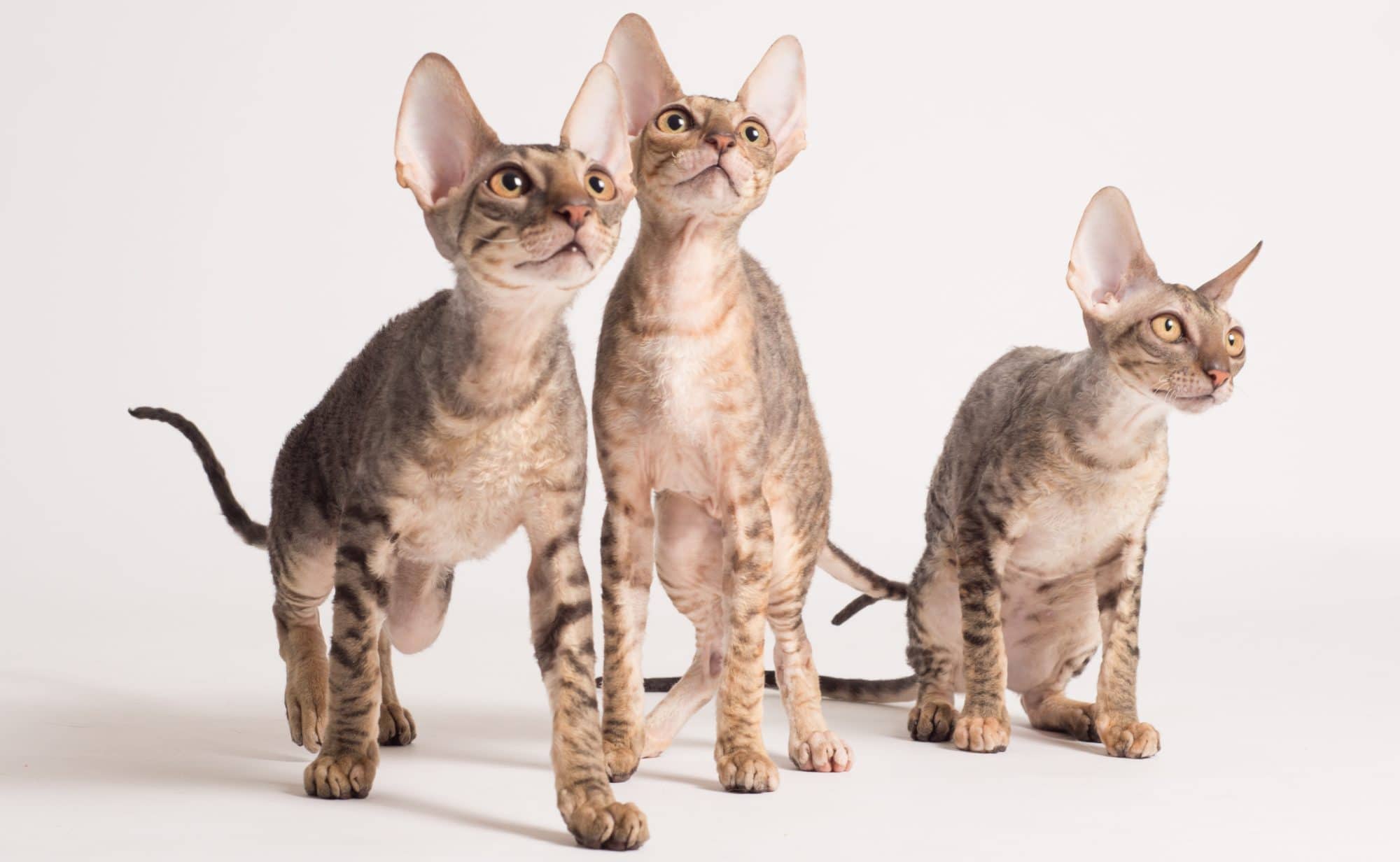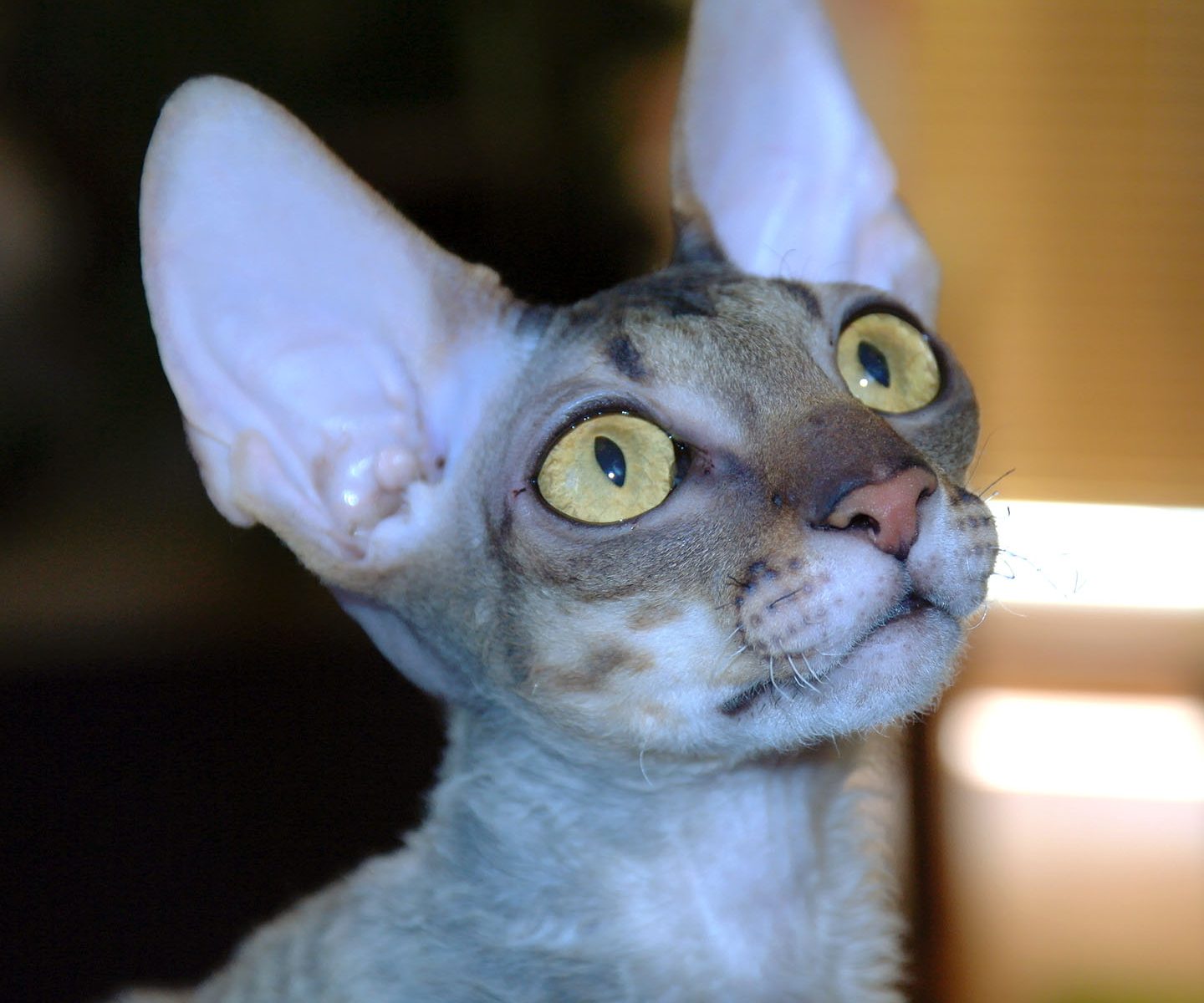Cornish rex – The look
The Cornish Rex is a study in curves, with curly coat, curved profile, large expressive ears, and Whippetlike arched bodies. In spite of their sophisticated, elegant appearance, they are anything but cool, aloof, or dignified. They are affectionate, people-oriented, and active cats whose kitten-like antics last a lifetime. Favorite Cornish Rex games are fetch and catch, and they may even use their agile paws to pick up and toss small objects. Belying its fragile appearance, the Cornish Rex is a very sturdy breed. They are perfect pets for the owner who wants active cats to participate in family life.
The most striking feature of the breed is its very noticeably curly coat. Ideally falling in marcel waves, the coat is very short, lies close to the body, and is incredibly soft to the touch, prompting comparisons to cut velvet, karakul lamb, rabbit fur, or silk. In fact, nothing else feels exactly like a Cornish Rex coat.
In addition to the coat, this breed is remarkable for its distinct egg-shaped head with high cheekbones, hollow cheeks, a strongly bridged Roman nose, and large ears set high on the head. The body has been compared to that of a Whippet, with its arched back, barrel chest, small waist, and very fine, long legs. In spite of their dainty appearance, these small to medium sized cats are extremely hard-bodied and muscular, using their welldeveloped hips and long legs for fast starts and stops, quick turns, and high jumps.
Because of the Cornish Rex’s short, fine textured coat, some people mistakenly believe that they do not shed and are hypoallergenic. In fact, all cats are constantly renewing their coats as old hairs are replaced by new ones. By comparison to some other breeds, Cornish Rex shedding is minimal, but they do indeed shed.
History – how that happened
Although otherworldly in appearance, Cornish Rex cats originated in Cornwall, England, where one first appeared in a litter of barn cats in 1950. A cream-colored male, named Kallibunker, was covered in tight rows of tiny curls, giving him the appearance of a miniature lamb. As he grew, his differences from his littermates became more dramatic: a slender, fine-boned body standing on long legs, a narrow head, enormous “bat ears,” and a long, whippy tail. Kallibunker was a genuine mutation and was bred back to his mother to produce curly kittens. The curly coated cats were bred with Burmese, Siamese, and British domestic shorthair cats, resulting in a broad genetic base for the Cornish Rex breed and the knowledge that the gene was recessive.
What is important – when i want a kitten
When choosing Cornish Rex kitten, take please into account which of their characteristics is decisive for you and do not hesitate to discuss it with the breeder, who usually knows each kitten at best and will help you to choose the right kitten for you. Kittens are usually available at the age of 14 weeks, when they are well developed physically by this age and taught the correct social behavior which is important for adaptation to the new environment.



